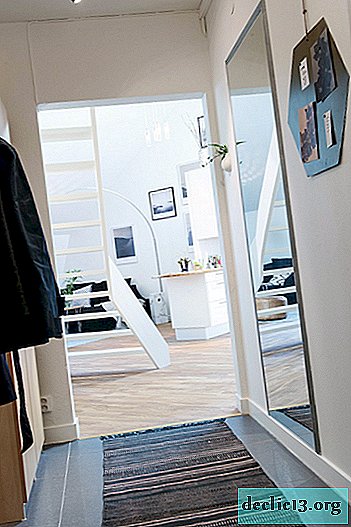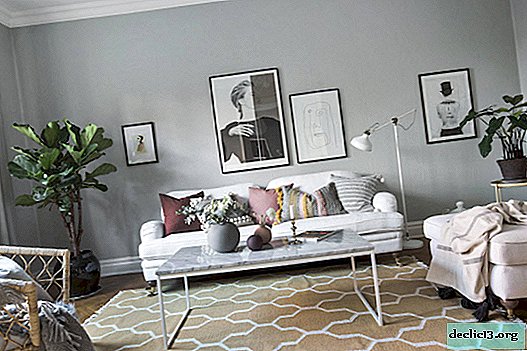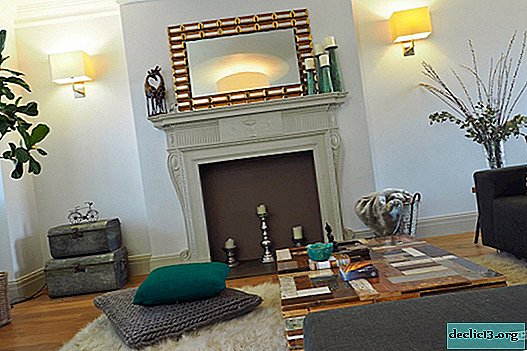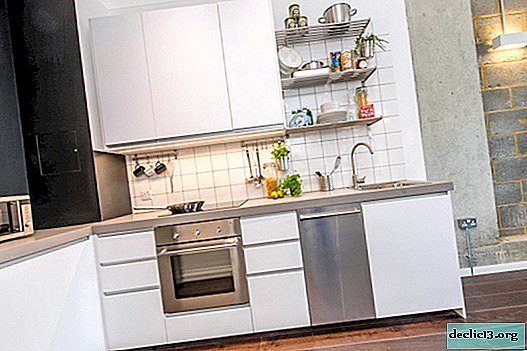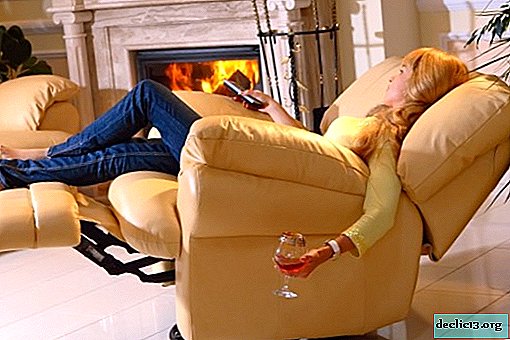Standard standards for chair height, the choice of optimal parameters
A chair is a piece of furniture that should be equally comfortable to work, relax, eat. But the question is not only in comfort, improper body position when sitting can provoke spinal diseases, affect the blood supply to all organs, cause sensations of pain and fatigue. That is why one of the main criteria is the height of the chair, which must be selected taking into account a number of important points. In this concept, not only the distance from the floor to the upper horizontal is embedded, but also the ratio of the height of the seat, armrests, backrest.
The importance of dimensions when choosing furniture
First of all, you should decide whether furniture is purchased for a particular person (for example, to the child's desk or to the theater lounge). If so, then it is his complexion that must be taken into account. If different people use the chair, the average parameters are taken into account. At the same time, not only the height of the person is important, but also the length of his legs, the upper half of the body, the height and design of the table.
Incorrectly selected dimensions of the stool can provoke pain in the spine, visual impairment, rapid fatigue while sitting on it. If the legs do not reach the floor, the femoral arteries, which supply blood to the lower extremities, are squeezed. As a result, a person has numbness of his legs, and subsequently difficulty walking. Too high a seat makes it necessary for a sitting person to stoop, bend the spine so as to bring his eyes closer to the table.
If, on the contrary, the seat is too low, then a person’s landing causes the back muscles to be in constant tension, lifting the body as high as possible.
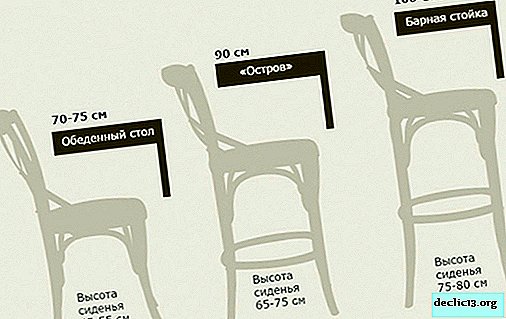
Correct body position on the chair
Ideal indicators when sitting on a chair are the following parameters:
- table cover removed from the eyes by 30 cm;
- legs at the knees should be bent at right angles and stand on the floor with the whole foot, and the knees should be above the pelvis;
- support should be present in the lumbar region so that the muscles are not in a state of tension;
- the depth of the seat should ensure that there is no pressure under the knees;
- the distance from the knees to the inside of the table top should not be less than 10-15 cm;
- hands lying on the table top should not be raised up.
So that the workplace is not cluttered, and the eyes do not strain when searching for the right objects, the table should have a width of at least 50 cm.
When sitting, the upper torso should not be tilted forward or tilted back. It is better when the axis of the back is at right angles to the seat. However, when a feeling of fatigue appears, a person should be able to lean on his back to rest.

Standard Standards
In the Russian Federation, there are state standards for household furniture (GOST 13025.2-85). For chairs and work chairs, the following standard sizes are regulated:
- seat depth - for a chair 360-450 mm, working chair - 400-500 mm;
- the height of the inflection of the back from the seat - 165-200 mm;
- seat width - at least 360-450 mm for a chair and 400-500 mm for a working chair.
The recommended dimensions of the chair also contain a distance between the armrests - at least 420 mm.
Modern furniture manufacturers offer customers a large assortment of chairs with various sizes. So, their total height can be from 800 to 900 mm, and the height of the chair seat in this case varies from 400 to 450 mm. The width of the backrest has a minimum size of 350 mm, and the depth can reach up to 500-550 mm. A model with a total height of 750 mm is considered standard (given that the average height of a person is 165 cm). However, you can individually calculate the size by height.
For people of average height (from 162 to 168 cm), a chair size of 42-43 cm is recommended, high (from 168 cm) - 45 cm, low (less than 162 cm) - 40 cm.
An option acceptable to the whole family are models with adjustable parameters.

Stools
When issuing standard stools, manufacturers are guided by the following dimensions according to GOST: the length of the side of the seat is at least 320 mm, the height of the legs is at least 500 mm, the distance from the first horizontal bar to the seat is at least 380-420 mm. Many factories today are increasing these parameters. So, in stores you can find stools from 420 mm to 480 mm high. This difference is argued by the need to select convenient models depending on growth.
However, on a standard model with a height of 450 mm, both children and tall adults can comfortably sit. The main thing is that the height of the kitchen chair is combined with the size of the table.

Chairs with backs
The times when stools were used in the kitchen and only armchairs were present in the living room furniture ensemble are gone. Today, the presence of a chair with a back is quite acceptable in the kitchen, hall, bedroom, recreation and work areas. The height of kitchen models with backs is in the range of 800-900 mm. The distance from the floor to the seat is 400-450 mm. The correct height of the back (or area to which you can lean your back) is a minimum of 450 mm. Exceptions are models for bar counters.
Furniture for cafes and restaurants are characterized by more diverse dimensions, its height can reach 1060 mm, the height of the back - 600 mm. At the same time, the distance from the floor to the seat should still be within 450 mm. To make the rest more comfortable, the back can have a smooth physiological bend and be slightly tilted back. In this case, the stability of the furniture should be provided by additional structural elements.
From the concept of "standard height" they leave in the case of choosing chairs with backs for work. Depending on working conditions, an autonomous adjustment of the seat height may be necessary so that, for example, the monitor is at eye level.

Adjustable chairs
The best combination of table and chair heights is selected using adjustable models. Options are relevant today, in which the distance from the floor to the seat can be rebuilt from 460 to 600 mm. As a rule, the height of the back is 450 mm and the width of the seat is 480 mm.
Considering that people do not always sit on such furniture elements evenly and often change their body position, the models are equipped with a stable support system (preferably five-beam). To ensure safety, the diameter of the circular support must be at least 700 mm. Mobility is ensured by wheels, the longevity of which depends on the raw materials used.
A feature of today's regulated models is their adaptation to any practical human activity. It can be: medical (for the patient or for the doctor), office, children’s, kitchen, bar, original designer or orthopedic chair.

Bar
The height of the chair for bar counters does not fit into standard standards. First of all, the size of restaurant equipment and furniture is taken into account here. The height of the models can range from 750 to 850 mm, the width can be at least 460, and the depth at least 320. The tilt radius for typical options is 450 mm and 220 for lumbar ones.
Since the legs when sitting in a high chair do not reach the floor, conditions are created for pinching the femoral veins and arteries. Therefore, it will not be superfluous to have an additional footrest for support on such a chair.
The ratio of the size of the chair and the table near the bar is as follows: with a tabletop height of 90 cm, the chair seat is located at a distance of 65 cm from the floor.

Children's models
The correct selection of chairs for children should also be carried out according to the rules:
- For babies up to one meter tall, the height of the table should be 340-400 mm, the chair - 180-220.
- For a schoolchild of 6-7 years old with a height of 110-120 cm, a chair with a height of 32 cm is recommended, and a table, including a dining table, is 52 cm.
- Older children (121-130 cm) need a table height of 57 cm and a chair - 35 cm. For height from 131 to 160 cm, a table of 58-64 cm is suitable, a chair - 34-38.
For adolescents with higher growth, it is recommended to purchase a table from 70-76 cm and a chair - from 42-46 cm.
Choosing a chair for a student, it is worth considering the following models:
- writing;
- computer;
- orthopedic knee (as a variety - dynamic).
They can be equipped with armrests, however, orthopedists do not consider this option physiologically correct.

How to choose the best sizes
If you need chairs for the family, models are selected for average growth, calculated taking into account all its members. However, for certain purposes it is better to make an individual selection. This will help maintain proper posture, not get tired during sedentary work, and feel comfortable and safe on the chair. Individual height selection is carried out according to the following formula: multiply a person’s height by the height of the table and divide by 165. From the resulting number you need to subtract 40-45 cm (the higher the person, the closer to 45). This will be the optimal height of the chair.
For example, with a height of 174 cm and a table height of 75 cm, the necessary chair height should be about 39 cm.
Equally important is the correct ratio of the height of the table and chair. Today, tables with a height of 72-78 cm are more often made. In this case, the standard chair for it has a height of 40-45 cm. If the stool has higher legs, there should be support under the legs.
For the convenience of sitting, the depth of the chair is important - the distance from the outer edge to the point of intersection with the back. Usually this parameter is defined as follows: three quarters of the thigh length + a few cm for the gap (between the front seat and the back popliteal surface). The average depth of the chair seat is 360-450 mm, the chair - up to 500 mm. Children's chairs have a depth of 200-240 mm (for preschoolers) and 270-360 mm (for schoolchildren).
The height of the back - the distance from the seat to the point at the level of the lower edge of the shoulder blades. The lumbar support will be functional if placed at the level of the 5th vertebra of the lumbar region. As the backrest increases, its height becomes smaller.
Chairs are furniture on which a significant part of the life of any person passes. Her proper selection is very important. Inconvenient stupa not only brings discomfort, but also harms health, causing pain in the back, neck, legs.




